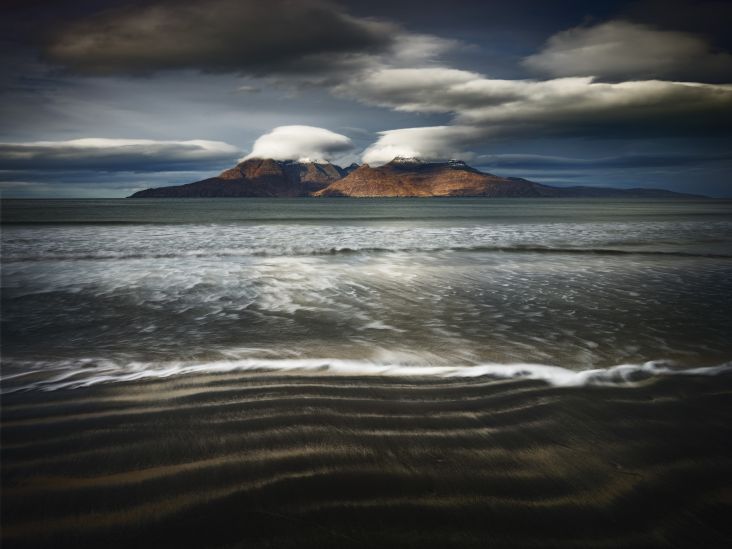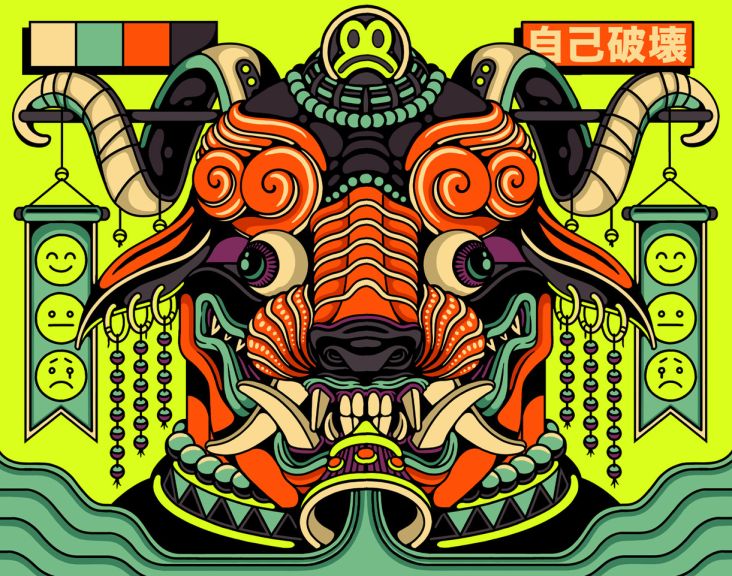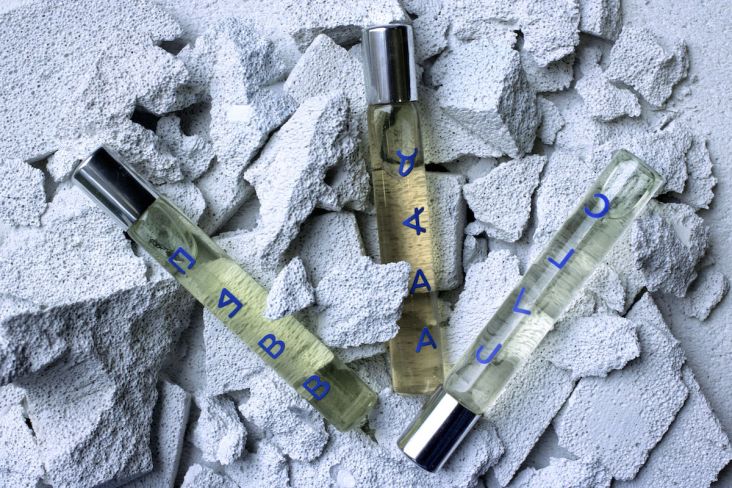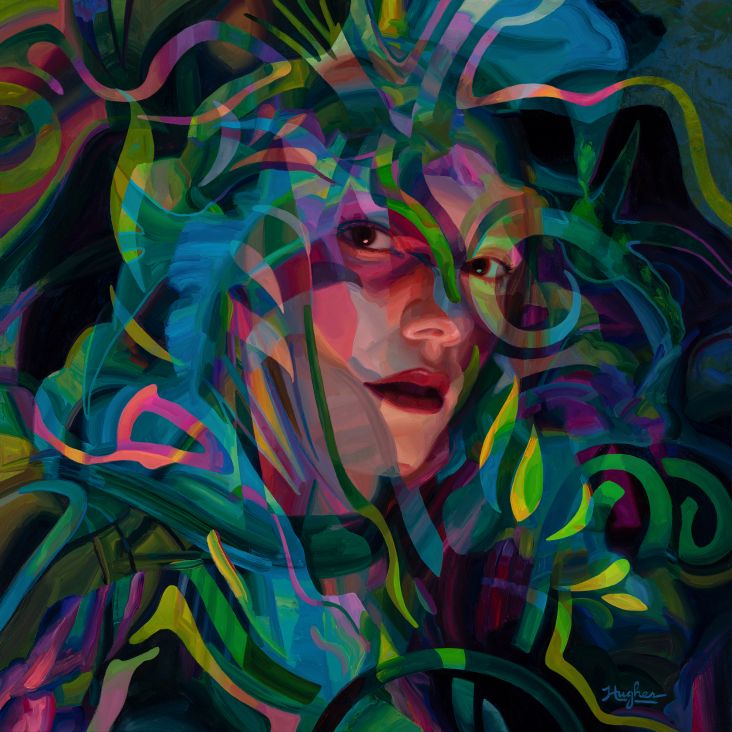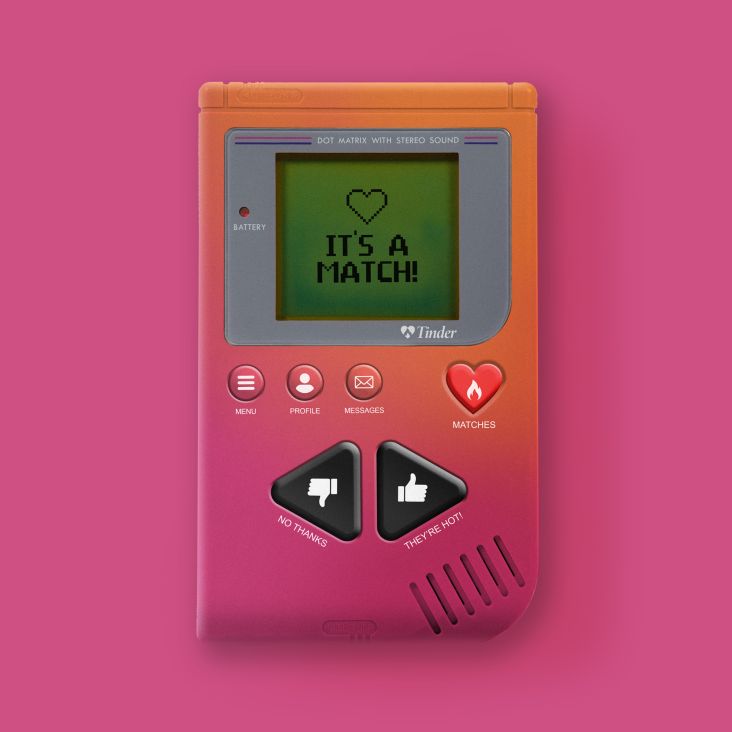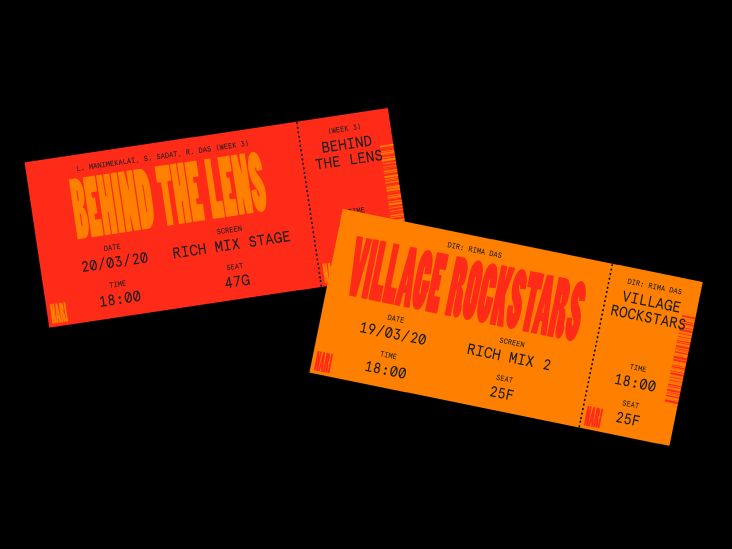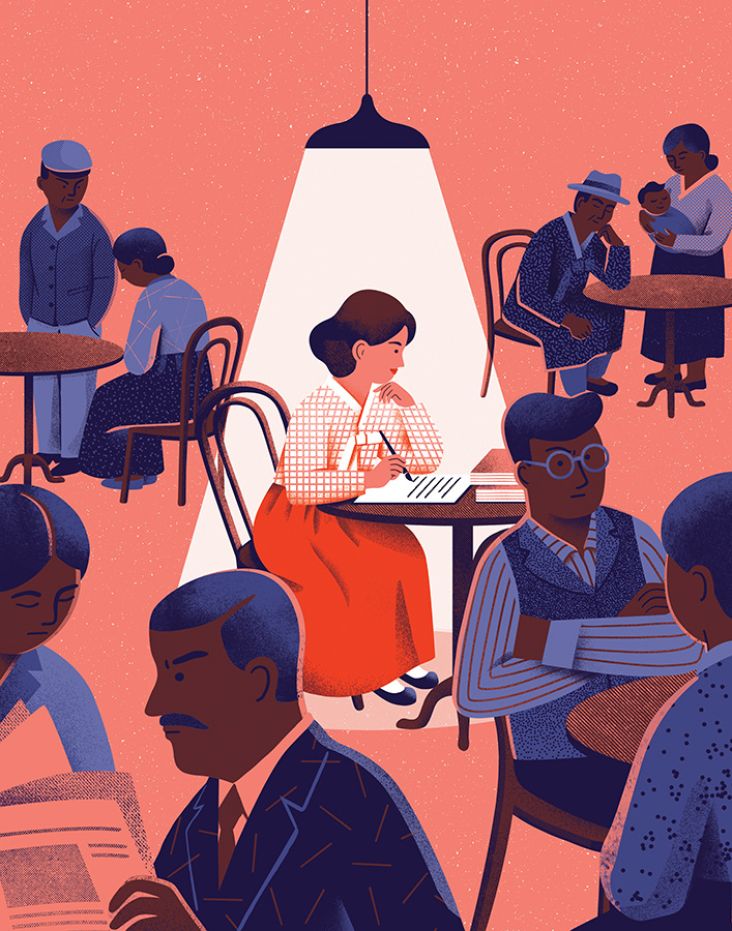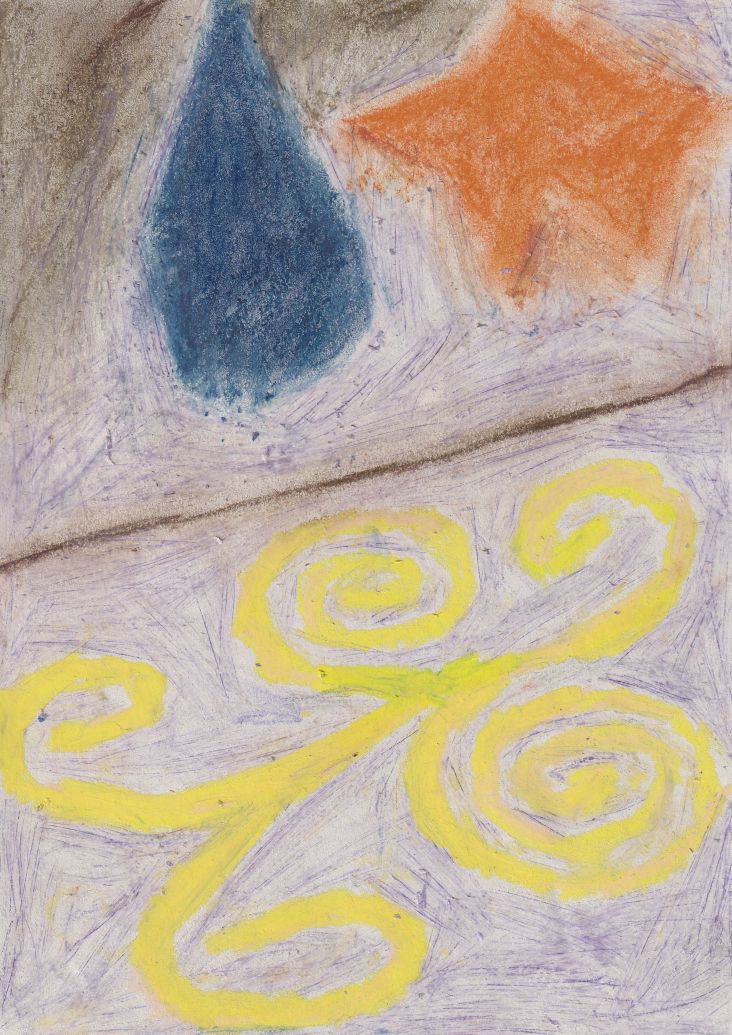The endlessly charming, joyful work of Hugo Bilton leaves you content and nostalgic
Illustrator and artist Hugo Bilton is nothing if not prolific, creating work at a rate and a quality unmatched by most. Originally from the Isle of Wight and now finding himself in South West London, the illustrative polymath and master of texture can't settle on a physical medium and is all the better for it.
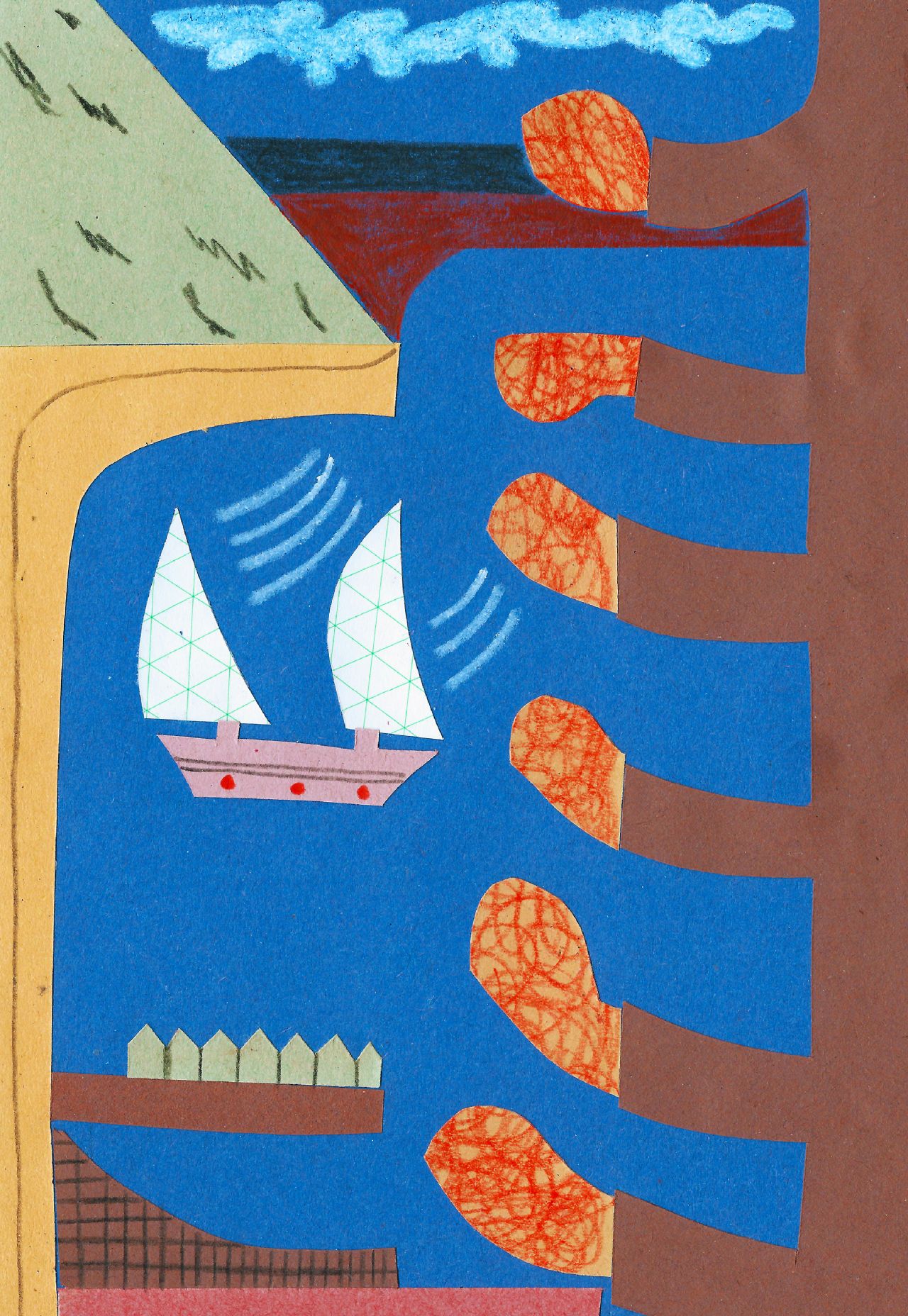
Hugo Bilton, Boat in Harbour, 2021
From material consideration to the charmingly crude mark-making, Hugo creates work that perfectly intersects the wonderment of childish nativity, the sophistication of refined composition and the utter comedic absurdity the likes not seen since The Mighty Boosh went off-air. "I have a lot of interests that change all the time, which can be a bit annoying actually," Hugo tells us, "but I'd prefer to be a jack of all trades."
Loving all things vintage, and appropriating a quaintness from eras before his, there is an innately and immediately nostalgic quality to his wor; be that the imagery of a 1970s computer in the background or a full-blown story arc. "This spurs my interest for old action movies that are so bad they are good," Hugo explains, not finding modern action films quite to his taste, "cheesy one-liners and lots of blood and I'm hooked… and if they have practical effects that's a big bonus for me."
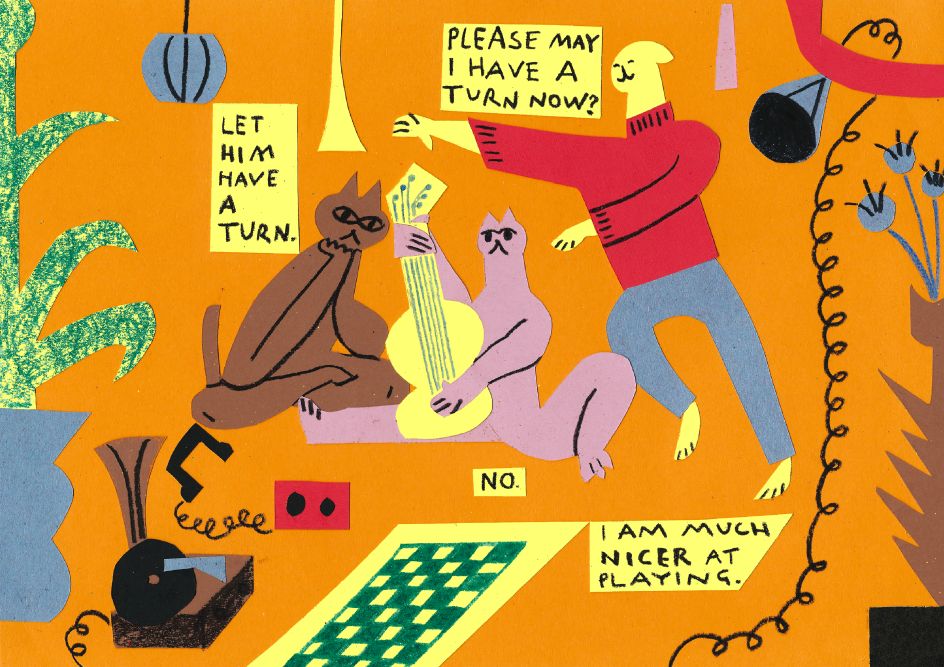
Hugo Bilton, Poster for Chalkpit Records, 2021
The practicality and crude awareness within these old actions films are immediately visible in Hugo's practice, where we find an innate physicality and texture to what he makes. "I do like to do at least 90% of the work on paper," Hugo remarks, wanting to keep a recognisable texture as well as the mistakes that come elemental to hand-drawn work.
"If I over-edit something it does miss a certain quality that can't be achieved by doing more to it," he explains, "the less, the better," in a way giving greater significance to the elements he chooses to have on the page. This is evidential in anything from the sugar paper and PVA glue reminiscent of primary school, or the bright water-coloured pencils distilling a vivid innocence in his mark-making. "Getting back into collage is something that has made me stick to this way of working," he adds, "trying not to overwork my pieces once they are scanned in is crucial to keep that papery feel."
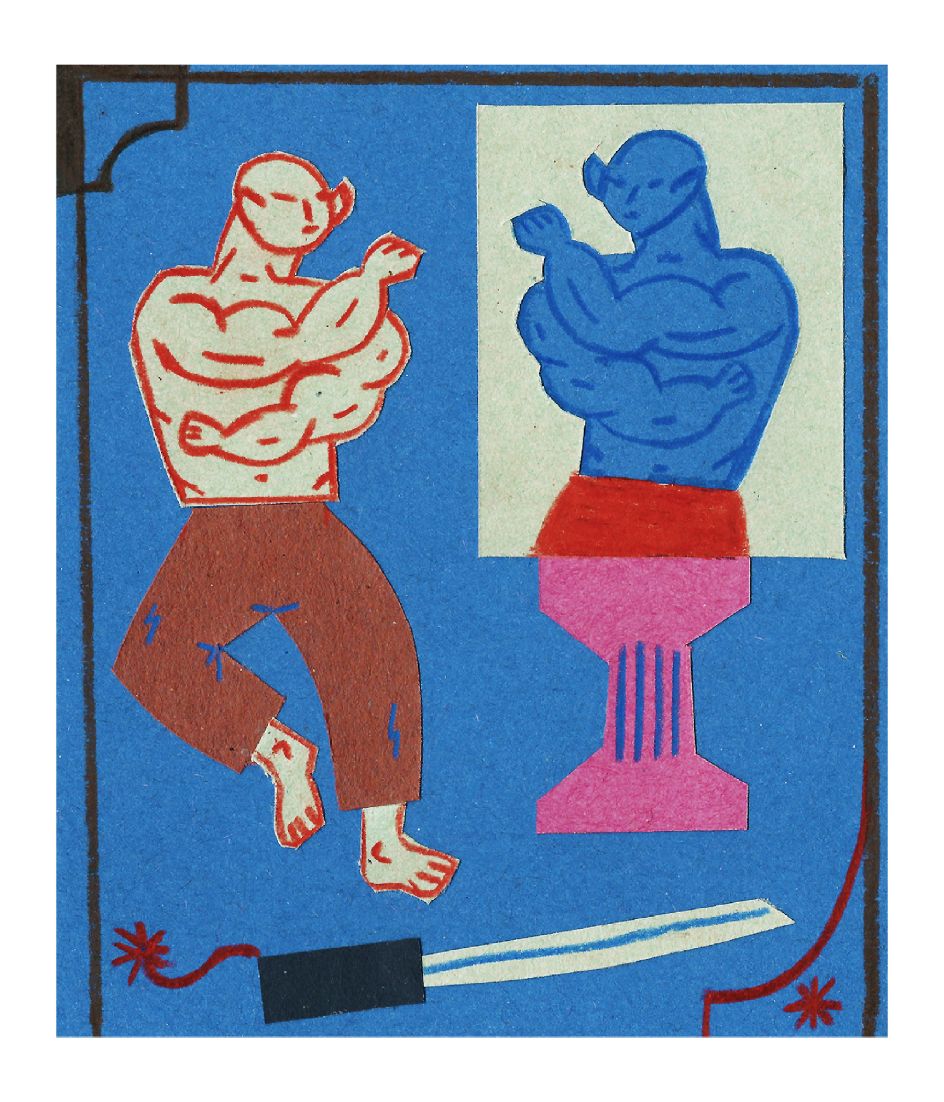
Hugo Bilton, Fight Yourself, 2021
The beauty of Hugo's recent emphasis on collage is the limitations it provides, telling us "I think the possibilities you have with a pencil can be endless, which can be overwhelming." Despite the process of trial and error, and "the cutting and sticking, ripping up then re-sticking," Hugo finds a balance between abstraction and recognition with the techniques of collage.
"The balance can be made with a scalpel or a pair of scissors," he explains, finding satisfaction and expression in "knowing what needs to be drawn before it's cut." It is apparent everywhere from his personal work to his commercial work, be it Lauran Hibberd's remarkable and absurd accompanying illustrations or posters for his on-going partnership with Chalkpit Records.
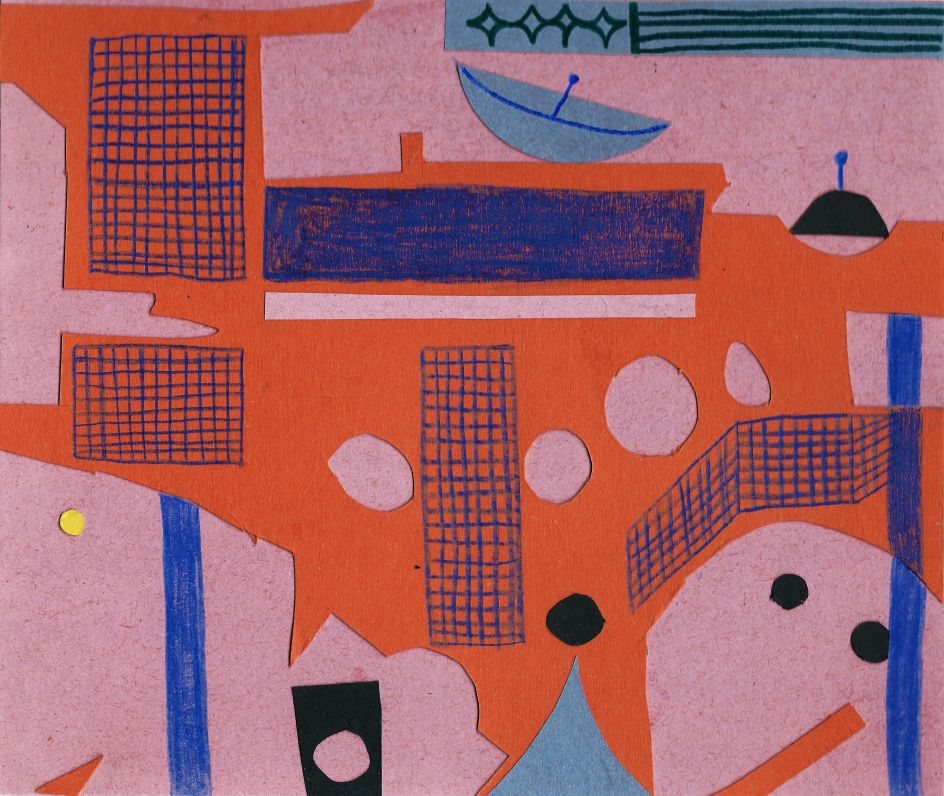
Hugo Bilton, House, 2021
What collage importantly provides Hugo is a technique that matches a quality elemental and ever-present in his work, which is that of unmitigated playfulness. There is an uncontrollable joy to Hugo's work that takes on the world with a sense of honesty and humour – where his odd, friendly and insanely buff characters feel so utterly familiar, and leave us wanting to know them more.
"I think playfulness should be important in every process ever, apart from maybe medical," Hugo explains," looking to spend more time cutting himself some slack and making fun things firstly for himself rather than initially for others.
"Whenever I feel like I'm being too serious about my art or getting frustrated I normally watch the same video on youtube every time," he recalls, that being a video profile on the artist Misaki Kawai. "She's an amazing artist, and her work always inspires me just to have fun and let it happen," Hugo notes, "it doesn't have to be serious." Similarly, Hugo's work both wonders and wanders; dancing across his work with a charming and naive curiosity.
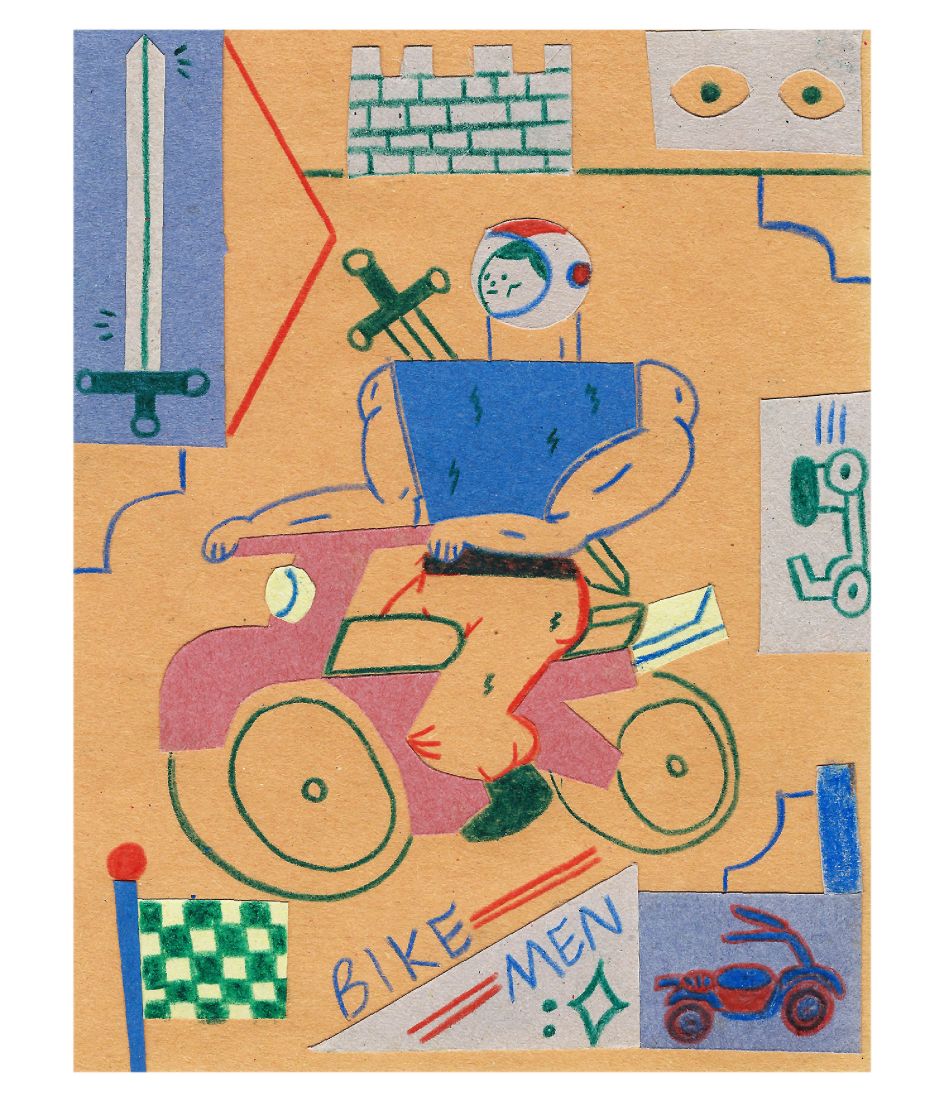
Hugo Bilton, Bikemen, 2021
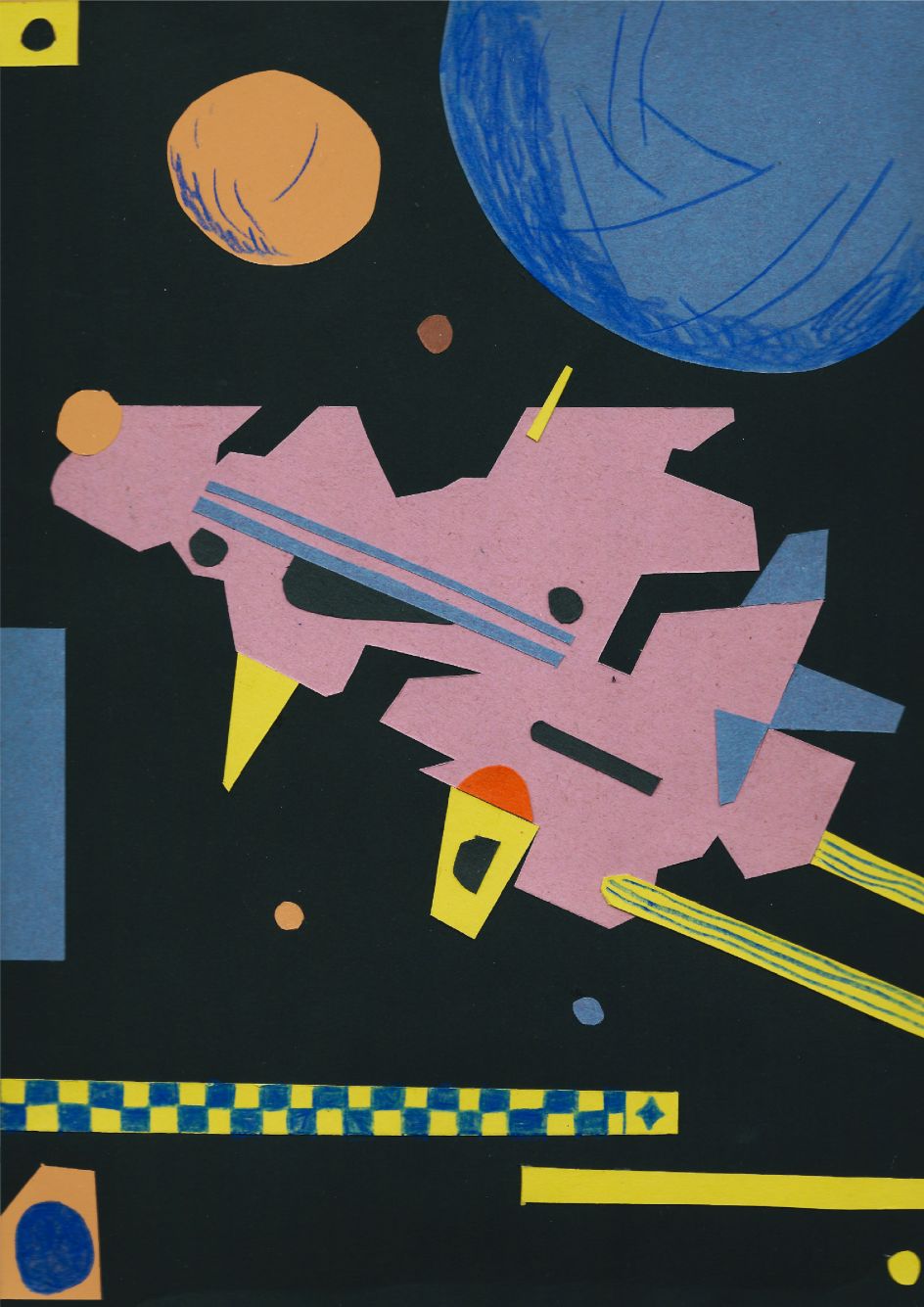
Hugo Bilton, Ship, 2021
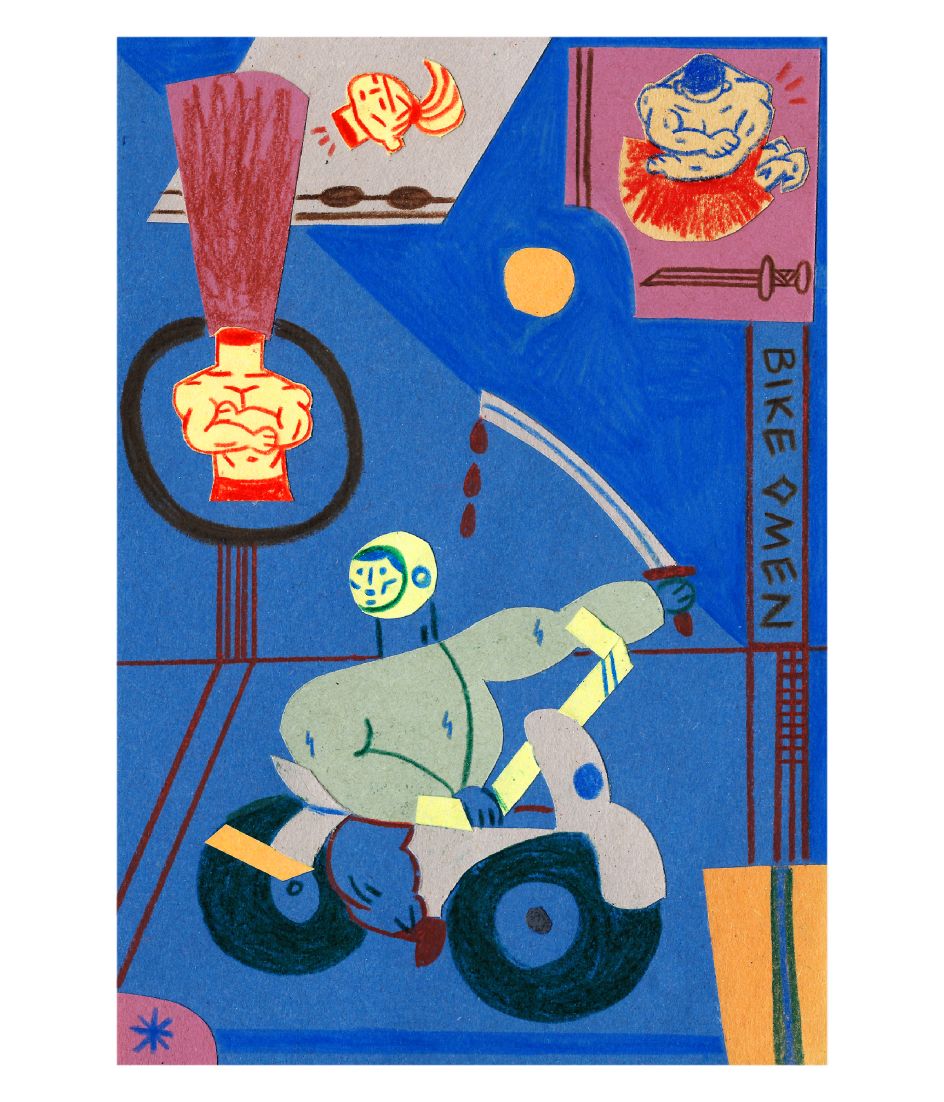
Hugo Bilton, Bikemen, 2021
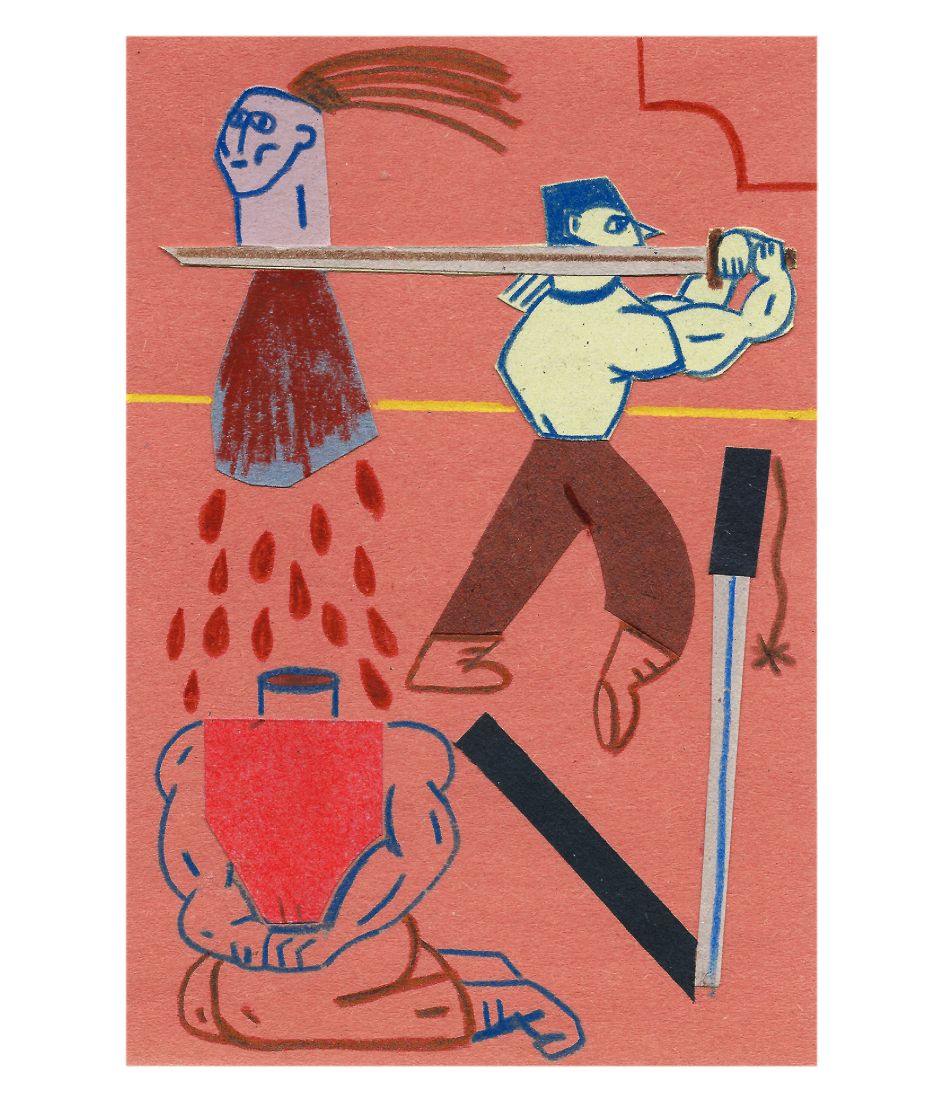
Hugo Bilton, Fight Yourself, 2021
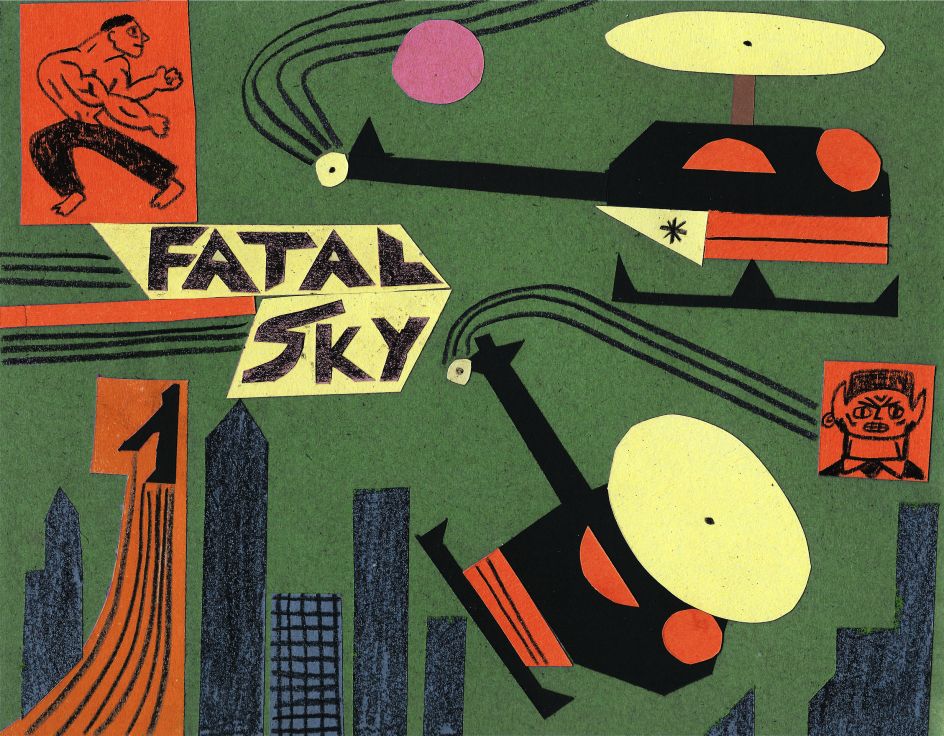
Hugo Bilton, Fatal Sky, 2021
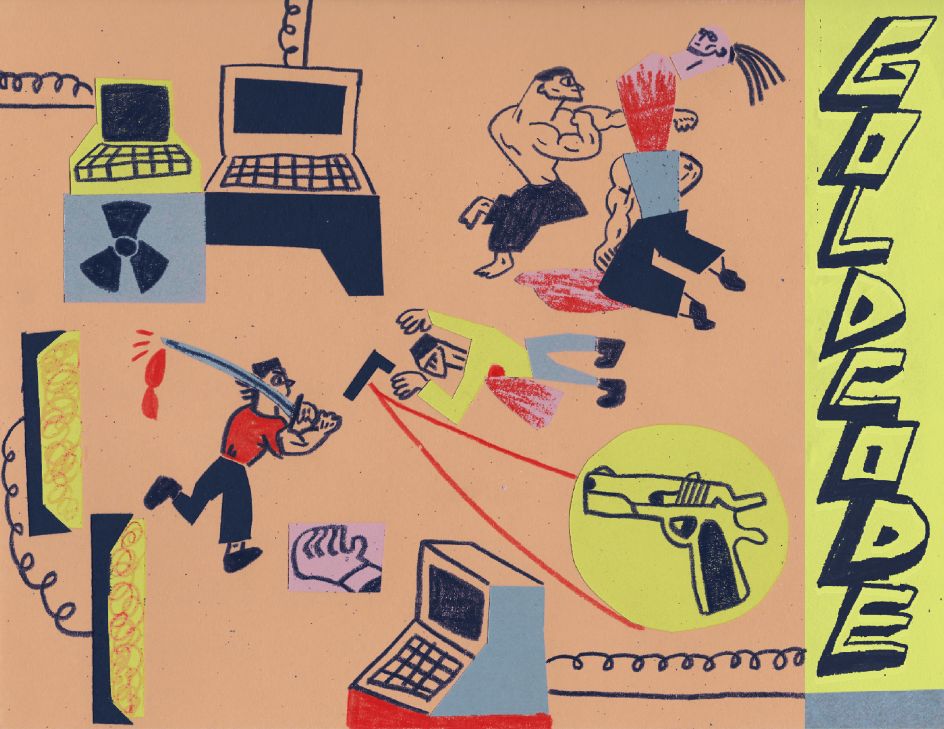
Hugo Bilton, Gold Code, 2021




 by Tüpokompanii](https://www.creativeboom.com/upload/articles/58/58684538770fb5b428dc1882f7a732f153500153_732.jpg)


 using <a href="https://www.ohnotype.co/fonts/obviously" target="_blank">Obviously</a> by Oh No Type Co., Art Director, Brand & Creative—Spotify](https://www.creativeboom.com/upload/articles/6e/6ed31eddc26fa563f213fc76d6993dab9231ffe4_732.jpg)








